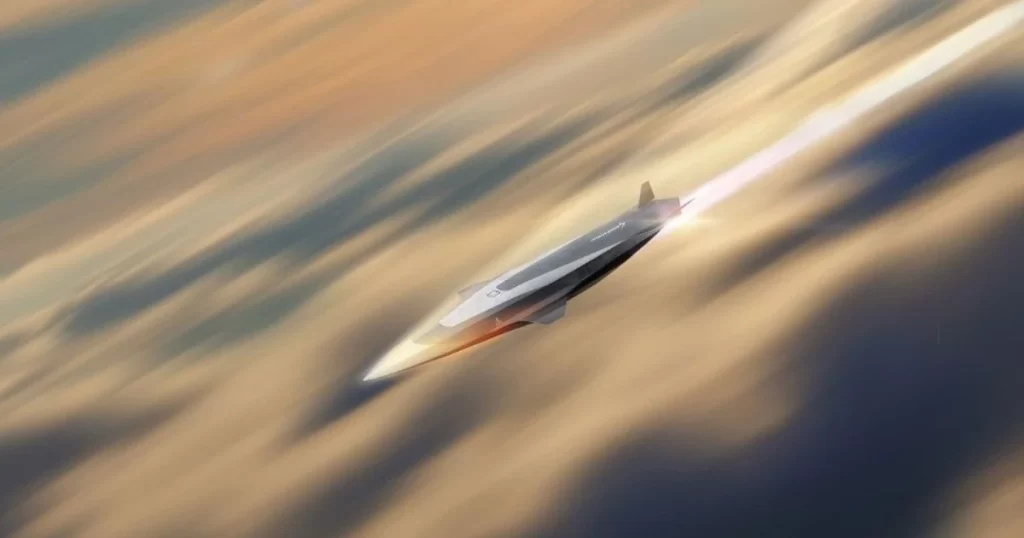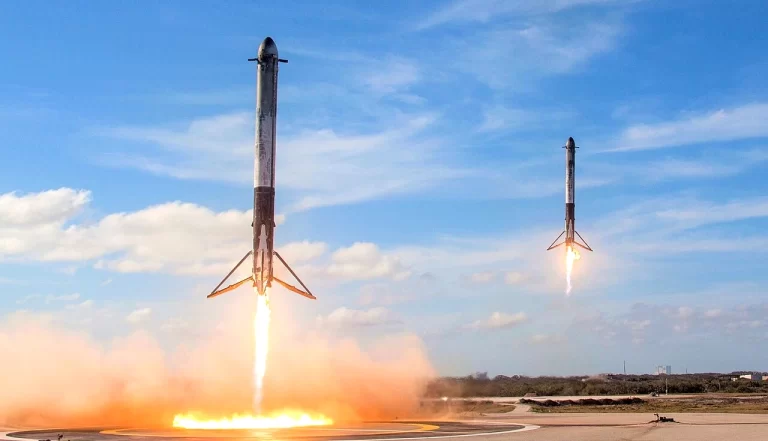Introduction
In an era where military superiority hinges on speed, precision, and adaptability, hypersonic technologies are emerging as a game-changer. With the ability to travel at speeds exceeding Mach 5 and maneuver through unpredictable trajectories, hypersonic systems are redefining what’s possible in both offensive and defensive strategy. At the forefront of this innovation is Lockheed Martin—a defense giant with a proven track record of turning ambitious ideas into real-world capabilities.
This case study explores how Lockheed Martin is not just participating in the hypersonic technologies race—it’s leading it. From advanced propulsion breakthroughs to deployable systems like the Mako missile and the Long-Range Hypersonic Weapon (LRHW), the company is setting a new benchmark for modern warfare. By combining engineering excellence, strategic partnerships, and mission-driven innovation, Lockheed Martin is helping shape a future where speed doesn’t just win battles—it defines them.
Hypersonic Technologies: Why They Matter Now More Than Ever
In today’s fast-paced defense landscape, speed and precision are essential. That’s where hypersonic technologies are reshaping modern warfare. These systems, capable of flying faster than Mach 5 (over 3,800 mph), bring together speed, stealth, and maneuverability in ways that traditional weapons simply can’t.
Unlike ballistic missiles, hypersonic vehicles don’t follow fixed paths. They can shift direction mid-flight, making them incredibly hard to track or intercept. This ability to move unpredictably at extreme speeds gives military forces a major strategic edge.
As geopolitical tensions rise, countries are racing to develop and deploy hypersonics—not just to strike first, but to stay ahead.
Key Reasons Hypersonic Technologies Are Gaining Momentum:
- Unmatched Speed: Hypersonic vehicles can reach targets in minutes, not hours, reducing enemy reaction time and maximizing mission effectiveness.
- Maneuverability: Unlike ballistic missiles, hypersonic systems can shift direction mid-flight, dodging defense radars and interceptors.
- Strategic Versatility: They can be used for tactical strikes, anti-ship missions, and long-range precision targeting—across air, land, and sea platforms.
- Global Relevance: The U.S., China, and Russia are locked in a high-stakes race to deploy these weapons at scale, making them a core pillar of modern military competition.
- Hard to Counter: Current defense systems weren’t built to neutralize Mach 5+ threats. Developing counter-hypersonic capabilities is now a global defense priority.
Hypersonic technologies aren’t just faster—they’re smarter, more flexible, and built for the next era of defense.
A Legacy of Innovation: Unveiling Lockheed Martin
For over a century, Lockheed Martin has stood at the forefront of aerospace and defense innovation. Founded in 1912 by aviation pioneer Glenn L. Martin, the company has evolved through groundbreaking achievements and strategic mergers, notably the 1995 union of Lockheed Corporation and Martin Marietta. This fusion created a powerhouse dedicated to pushing the boundaries of technology and security.
From the early days of crafting pioneering aircraft to developing state-of-the-art defense systems, Lockheed Martin’s commitment to excellence is evident in its diverse portfolio. The company’s contributions include iconic aircraft like the F-22 Raptor and F-35 Lightning II, advanced missile systems. They’ve also played a crucial role in space exploration with projects like the Orion spacecraft and the James Webb Space Telescope.
With a global presence spanning over 350 facilities and a workforce of approximately 122,000 employees, Lockheed Martin continues to lead in delivering innovative solutions that address complex challenges. Its dedication to research and development ensures that it remains a key player in shaping the future of aerospace and defense.
Breaking Limits: Challenges and Advances in Hypersonic Systems
Developing hypersonic technologies isn’t just about building faster missiles—it’s about solving some of the most complex engineering challenges in modern defense. Lockheed Martin and its partners have made significant progress, but the road to reliable, scalable hypersonic systems is far from smooth.
One of the biggest challenges lies in heat. At speeds over Mach 5, friction from the atmosphere generates temperatures that can exceed 2,000°C—hot enough to destroy conventional materials. This makes thermal management in hypersonic vehicles a critical area of focus. Lockheed Martin is exploring advanced composites and active cooling systems to ensure vehicle survivability.
Another breakthrough area is propulsion. Traditional jet engines don’t function at hypersonic speeds, which is why scramjet propulsion systems are being developed. These air-breathing engines compress and ignite atmospheric air at extreme speeds, allowing sustained hypersonic travel without the weight of onboard oxidizers.
Key Technical Challenges:
- Heat Resistance: Materials must withstand extreme temperatures for extended durations.
- Flight Control: Maintaining stability and accuracy at hypersonic speeds is incredibly complex.
- Propulsion: Scramjets and boost-glide systems require ultra-precise engineering.
- Manufacturing Precision: Even microscopic imperfections can affect high-speed aerodynamics.
Despite these roadblocks, Lockheed Martin is leveraging decades of aerospace experience, along with partnerships across government and private sectors, to push boundaries. The result? Weapons and vehicles that don’t just go faster—they go further, smarter, and safer.
Lockheed Martin’s Hypersonic Arsenal: From Mako to Dark Eagle
Lockheed Martin isn’t just experimenting with hypersonics—it’s building a comprehensive arsenal of next-generation systems that are rapidly moving from concept to combat-ready. Its strategic investments in both air-launched and ground-based platforms underscore its leadership in hypersonic missile development.
Mako Hypersonic Missile: Agile, Modular, Mission-Ready
Unveiled in 2024, the Mako missile represents a new class of modular hypersonic technologies weapons. Designed for flexibility, it allows mission-specific configurations through interchangeable payloads and guidance systems.
What Makes Mako Stand Out:
- Compatible with a wide range of platforms, including F-22, F-35, and B-21 Raider
- Features modular architecture for fast reconfiguration
- Combines speed, range, and adaptability in a compact form
With Mako, Lockheed Martin is enabling tactical units to deploy hypersonic technologies capabilities without requiring major platform upgrades—a key advantage in fast-evolving threat environments.
LRHW “Dark Eagle”: Long-Range, High-Impact
The Long-Range Hypersonic Weapon (LRHW)—nicknamed “Dark Eagle”—is a ground-based system developed in partnership with Dynetics and the U.S. Army. It uses the Common Hypersonic Glide Body (C-HGB) to deliver high-speed precision strikes from mobile launch platforms.
Dark Eagle at a Glance:
- Ground-launched, boost-glide system
- Co-developed with Dynetics and integrated by Lockheed Martin
- Awarded a $756M enhancement contract by the U.S. Army in 2024
- Designed to be both deployable and survivable in dynamic battlefield conditions
This system gives the U.S. military long-range strike capabilities previously unattainable—without relying on traditional ballistic missiles.
The Power of Collaboration
Lockheed Martin’s success in hypersonic technologies is also a result of strategic alliances:
- Dynetics: A key player in the development and testing of the Common Hypersonic Glide Body (C-HGB), Dynetics ensures that the glide phase of hypersonic flight remains stable, precise, and combat-ready under real-world conditions.
- Northrop Grumman: As a partner in propulsion and heat management, Northrop Grumman brings deep expertise in scramjet engines and high-temperature shielding systems—critical for keeping vehicles intact at Mach 5+ speeds.
- NASA: With decades of experience in atmospheric re-entry and advanced material science, NASA supports Lockheed Martin with R&D focused on vehicle design, high-speed aerodynamics, and thermal protection systems.
- DARPA: Known for pushing the edge of innovation, DARPA collaborates on experimental flight platforms and next-gen testing protocols, helping validate early-stage hypersonic technologies before full-scale production.
By integrating expertise across industries, Lockheed Martin is accelerating the deployment of advanced hypersonic technologies—while keeping pace with emerging threats.
Global Competition in Hypersonic Innovation
The race for hypersonic technologies isn’t limited to U.S. defense contractors. Around the world, nations and their defense partners are pouring billions into developing weapons that can outfly, outmaneuver, and outmatch conventional systems.
This isn’t just an arms race—it’s a technology race. With potential to redefine global power dynamics, hypersonic innovation is now a top-tier priority for military planners in the U.S., China, Russia, and beyond.
While Lockheed Martin leads in air-launched and ground-based systems, other players are aggressively advancing their own platforms—from glide vehicles to scramjet-powered cruise missiles.
Key Competitors in the Hypersonics Space
| Nation / Company | Focus Area | Notable Project(s) |
|---|---|---|
| Raytheon Technologies | Hypersonic cruise missile development | Hypersonic Air-breathing Weapon Concept (HAWC) |
| Northrop Grumman | Propulsion & thermal protection systems | 3DEW Engine Program |
| China (PLA) | Medium-range tactical glide vehicles | DF-17 with DF-ZF Glide Body |
| Russia (Roscosmos / MoD) | Nuclear-capable glide vehicles | Avangard Hypersonic Glide Vehicle |
| India (DRDO) | Scramjet-based test platforms | HSTDV (Hypersonic Technology Demonstrator Vehicle) |
Each of these players is advancing quickly—some with operational systems, others still in test phases. But what they all share is a clear recognition: hypersonic missile development is no longer optional—it’s strategic.
As these technologies evolve, the challenge won’t just be building faster weapons—it’ll be staying ahead of the countermeasures being developed just as rapidly.
Strategic Outcomes and Future Impact
Lockheed Martin’s investments in hypersonic technologies are already delivering measurable results across defense operations, government partnerships, and global influence. But beyond today’s capabilities, the real impact lies in how these innovations are shaping the future of warfare and defense readiness.
By bringing hypersonic weapons like the Mako and Dark Eagle closer to deployment, Lockheed Martin is not just building advanced platforms—it’s enabling new military doctrines. These systems give armed forces the ability to strike with unprecedented speed, from multiple domains, with pinpoint accuracy.
Strategic Outcomes Realized
- Operational Readiness: Mako and LRHW systems are progressing through final stages of testing, with deployment expected in the near term.
- Enhanced Deterrence: The ability to launch rapid, high-precision strikes changes how adversaries calculate risk.
- Industrial Growth: Multi-billion-dollar contracts (like the U.S. Army’s $756M investment) are fueling job creation, tech innovation, and supply chain expansion.
- Global Partnerships: Lockheed Martin’s work with DARPA, NASA, and international allies is reinforcing America’s role as a global leader in hypersonics.
The Road Ahead: What’s Next in Hypersonics?
As competition accelerates, so does innovation. Lockheed Martin is exploring AI-powered targeting, advanced materials for thermal management in hypersonic vehicles, and next-gen propulsion beyond scramjets.
In the next decade, hypersonics will likely expand into:
- Sea-based and space-launched platforms
- Interoperable systems for allied nations
- Integrated sensor-fusion for real-time decision-making
Market Impact Snapshot
| Metric | Value |
|---|---|
| Global Hypersonics Market (2030) | $13.9 Billion |
| Projected CAGR (2023–2030) | 9.4% |
| Lockheed’s Hypersonics R&D Budget (FY23–24) | $1.3 Billion |
| U.S. Army LRHW Enhancement Contract (2024) | $756 Million |
Lockheed Martin isn’t just building missiles—it’s building a future where speed, precision, and strategic superiority define global security. And as hypersonics evolve, so too will the rules of engagement.
Lockheed Martin Annual Revenue (2019–2024)
Between 2019 and 2024, Lockheed Martin’s revenue showed steady growth, rising from $59.81 billion to $71.04 billion. During the same period, the company nearly doubled its annual investment in research and development—from $1.3 billion in 2019 to $3.0 billion in 2024. This sharp increase in R&D spending, especially in 2024, signals a strategic shift toward next-generation technologies like hypersonics, autonomous systems, and AI-driven defense capabilities—cementing Lockheed Martin’s role as a forward-thinking leader in global defense innovation.
Conclusion: Shaping the Future at Hypersonic Speed
Lockheed Martin’s pioneering work in hypersonic technologies is not just advancing weapon systems—it’s transforming the very nature of defense, speed, and national security. As global competition accelerates, the company’s relentless innovation, strategic collaborations, and engineering expertise have positioned it at the forefront of this next-generation arms race.
Key Takeaways
- Industry Leadership: Lockheed Martin stands out as a global innovator, driving breakthroughs in hypersonic missile development and operational systems like Mako and Dark Eagle.
- Engineering Excellence: Overcoming challenges in thermal management, scramjet propulsion, and advanced materials demonstrates Lockheed Martin’s unmatched technical capabilities.
- Strategic Impact: New hypersonic platforms are strengthening U.S. and allied deterrence, reshaping military strategies, and influencing global defense policies.
- Collaborative Ecosystem: Partnerships with organizations like Dynetics, Northrop Grumman, and U.S. defense agencies accelerate development and deployment, ensuring rapid response to evolving threats.
- Future Focus: With ongoing investments in AI-driven guidance, advanced propulsion, and global collaborations, Lockheed Martin is well-positioned to set the standard for hypersonic innovation in the coming decade.
In a world where speed and precision can define the balance of power, Lockheed Martin’s hypersonic technologies are not just keeping pace—they’re setting the trajectory for the future of defense.




